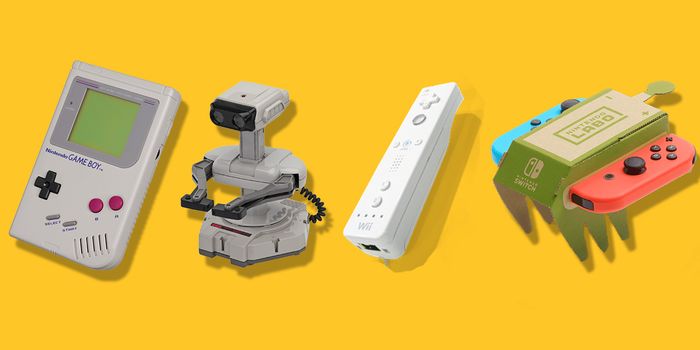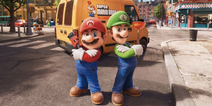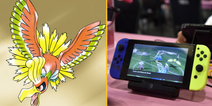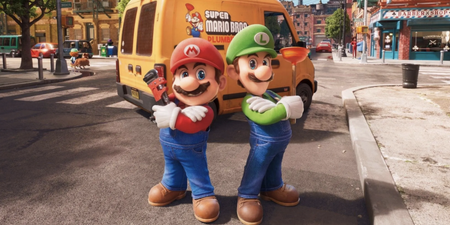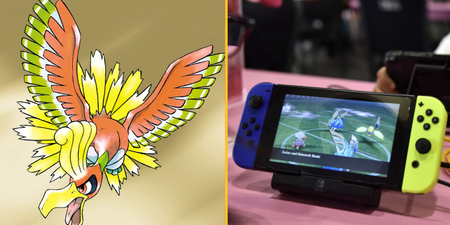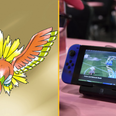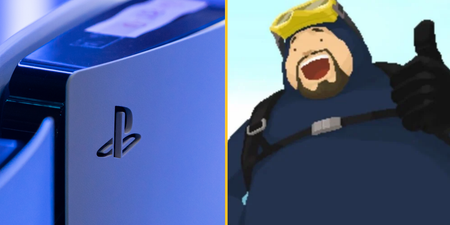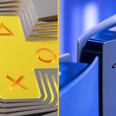Nintendo’s latest idea involved building controllers out of cardboard. It is both insane and brilliant.
If there’s one thing Nintendo loves doing, it is pushing video games forward. And The Labo – a bizarre add-on for the Switch that involves building IRL fishing rods and pianos out of cardboard, is just the latest example. Most gamers are happy with the medium being confined to sitting statically with a controller in hand, controlling the action via button presses. Various fads – dance mats, light guns, Guitar Hero – have come and gone, but ultimately nothing has changed that much since Space Invaders.
https://www.youtube.com/watch?v=5cRE95J4Xb4
Nintendo have never been happy with that though. It probably all lies in the company’s DNA. The pre-video games history of Nintendo is fascinating, starting out as a playing card manufacturer, and flirting with products as diverse as taxi services, and, er, ‘love hotels’. But by the 1960s, they’d settled down as a toy company. And that’s the key – it feels like they’ve always viewed video games as toys. Not ‘interactive movies’ or finite challenges to be conquered, but instead thing to play with and fire your imagination.
When the NES launched in the West in 1985, after several successful years in Japan, they were faced with a market that had soured on video games. The video game crash of 1983 meant retailers were reluctant to stock games consoles. So Nintendo rebranded it as a toy – they developed R.O.B., a plastic robot who would control the game with spinning gyros. In truth, it wasn’t a lot of fun to play, but it looked cool. And the other add-on they bundled with consoles proved a lot more enduring: The Zapper gun, which you allowed you shoot 8-bit fowl (but not that pesky dog) in Duck Hunt. Games didn’t have to be chained to a controller.
They have also never thought that video games should be confined to a TV screen, either. As the legend goes, Nintendo devoloper Gunpei Yokoi got the inspiration to create a handheld device after seeing a bored businessman on the train playing with a pocket calculator. That would eventually become the Game Boy. In 1995, Yokoi would develop the Virtual Boy, a very early VR headset that only displayed in red and black, and gave players headaches. The former was one of the most successful consoles of all time; the later one of gaming’s biggest ever flops. But that doesn’t matter – what matters is Nintendo’s desire to make video games something more tangible and dynamic than just a screen.
Of course, the ultimate example of this was the Wii, and in particular Wii Sports. Motion controllers weren’t completely unheard of – the PlayStation EyeToy had launched in 2003 – but Wii Sports felt like completely fresh when it arrived in 2006. It was something your parents and grandparents could play. Hell, even the entire Redknapp family enjoyed playing it.
Yet it also highlights the biggest flaw with many of Nintendo innovations: Wii Sports was great fun on Christmas morning, but its elaborate nature and lack of depth doesn’t lend itself to repeat play, and it was often gathering dust by Boxing Day. The Wii’s motion features were often awkwardly inserted into games that didn’t need them, ruining more traditional titles like FIFA. On the other hand at this point in time, the Nintendo DS offered games two screens, touch screen and a microphone, which gave us innovative and enduring games like Professor Layton, Nintendogs and Phoenix Wright.
Which brings us to the Labo. While it’s actually a relatively simple concept, it is surprisingly difficult to sum up in an easy-to-digest marketing pitch. But here goes. Essentially, the ‘Labo’ is not a thing in and of itself – each Labo set comes with a game cartridge and several sheets pre-printed cardboard, that are used to construct various items, such as fishing rods or pianos, that house the Switch or its controllers. Some, like the fishing rod, are essentially just new controllers for minigames, whereas with the RC cars the fun is actually driving around your IRL living room.
But really, the games themselves are somewhat inconsequential. The Nintendo reps there when I got to demo the Labo were quick to point out a lot of the fun is in the building. The ridiculous robot suit lets you play fairly enjoyable Optimus Prime-simulator, but I can see the real joy in it coming from spending a summer holiday afternoon building the damn thing. Yes, Nintendo have listened your parents moaning, and actually created something to stop you looking at that damn screen all the time.
https://www.youtube.com/watch?v=AiFI1g46kZk&t=59s
Probably the most interesting – and also indefinable – aspect of the Labo is creativity it offers. It is not really about ‘playing games’, it is about making things. The Piano software reminded me of Mario Paint on the SNES, and I can see videos of people’s compositions flooding YouTube soon. The real scene-stealer though is the Garage mode, which allows you to essentially reprogram all the Switch functions so that you can invent your own Labo creations. Nintendo have already posted how to make a guitar from scratch, but knowing the internet, there’s sure to be some wild, fascinating, and probably inappropriate things that get built out there.
https://twitter.com/petersteelesgf/status/987490545395171328?ref_src=twsrc%5Etfw&ref_url=https%3A%2F%2Fkotaku.com%2Fajax%2Finset%2Fiframe%3Fid%3Dtwitter-987490545395171328%26autosize%3D1
The biggest potential with the Labo is likely to be its lifespan – there’ll definitely be a hardcore community of builders, but with no further sets on the horizon, once all the cardboard is used up I can see it being forgotten about. But that’s not the point. Nintendo is all about doing mad weird stuff like this, and I look forward for the next thing they come out with.
The Nintendo Labo Variety Kit and Robot Kit are released on 27th April 2018.
